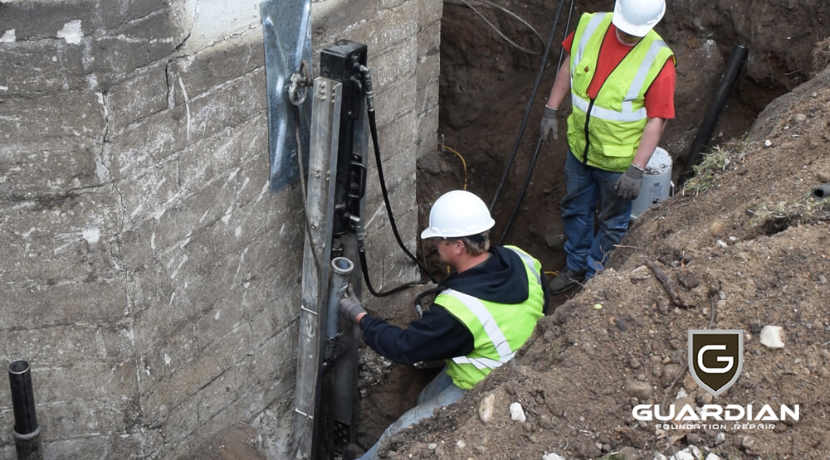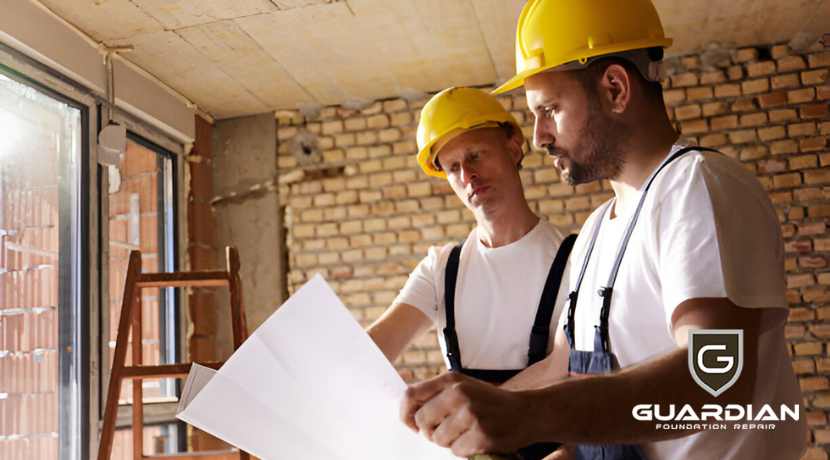Introduction
Noticing cracks or shifts in your home’s foundation can be worrying, it’s what holds your entire home together. If you’re in Knoxville, TN, and you’re asking yourself, “How long will my foundation repair last?”, you’re not alone. It’s completely normal to want peace of mind, knowing your foundation is stable for the long term.
In this guide, we’ll walk you through the key factors that impact the lifespan of your foundation repair. We’ll also share tips on how to ensure your home stays safe and secure for years to come.
The goal is to help you make informed decisions and feel confident that your investment in foundation repair will yield a positive return.
Factors That Affect the Longevity of Foundation Repairs and Tips to Ensure Long-Term Stability
Foundation repairs are an essential part of maintaining your home’s structural integrity. However, while these repairs can restore stability, they may not always be a permanent solution. Several factors influence the longevity of your foundation repairs. From soil movement to weather conditions, environmental elements can continue to put pressure on your foundation, affecting the durability of the repairs over time.
Here’s a closer look at the key factors:
1. The Repair Method Used
Not all foundation repair methods are created equal. Some techniques are designed to offer long-lasting stability, while others are temporary fixes. For example, piering and underpinning are excellent for stabilizing foundations deeply, making them ideal for severe issues. These methods offer long-term solutions by providing support beneath the foundation.
On the other hand, methods like crack sealing or surface-level fixes are better suited for minor issues. While these fixes can be effective in the short term, they might not offer the same durability if the underlying cause isn’t addressed.
Choosing the right repair method can significantly influence both the durability of your foundation and the repair costs in the long run.
2. Soil Conditions Around Your Home
The type of soil beneath your foundation plays a significant role in how long your repairs will last. In Knoxville, the soil is often clay-rich, which means it expands and contracts with moisture changes. This natural shifting can add stress to your foundation, making repairs less effective over time.
To ensure the longevity of your repairs, it’s crucial to stabilize the soil beneath the foundation and address moisture-related issues.
If left unmanaged, soil movement could cause your repairs to fail faster, so proper soil stabilization is key to keeping your foundation intact.
3. Weather and Seasonal Changes
Knoxville experiences a variety of weather conditions throughout the year, including hot summers and cold winters. These fluctuations in temperature and moisture levels can cause the soil beneath your foundation to expand and contract, potentially impacting the stability of your home’s structure.
A well-performed repair should take these seasonal changes into account, but it’s important to keep an eye on how weather patterns affect your foundation over time.
While foundation repairs are designed to withstand these changes, ongoing monitoring and proactive care are essential for ensuring lasting results.
4. Quality of the Repair
The quality of the materials used in your foundation repair plays a significant role in its longevity. High-quality materials like epoxy injections and polyurethane foam provide better bonding and are more durable than lower-grade options.
Additionally, hiring an experienced and professional foundation repair contractor ensures that the repair is done to the highest standards, which significantly reduces the risk of failure.
5. Proper Drainage Around Your Foundation
One of the biggest threats to a stable foundation is water. Without proper drainage, water can pool around your foundation, seeping into cracks and causing further damage. This can weaken the repair and lead to new issues.
Ensuring that your property has proper grading, effective gutters, and downspouts to direct water away from the foundation will help maintain the integrity of your repairs. It’s crucial to address any drainage issues promptly to prevent future damage.
How Long Do Different Foundation Repair Methods Last?
Each method has its own advantages, depending on the nature of the problem and the severity of the damage. To help you understand how long your repair will last, let’s take a look at some of the most common foundation repair methods and their typical lifespans:
Epoxy Injection Repairs
Epoxy injections are one of the most common methods used for minor cracks in foundation walls. This technique involves injecting an epoxy resin into cracks to seal them and prevent water infiltration.
- How long it lasts: 5 to 10 years, depending on the severity of the crack and the surrounding conditions. While epoxy repairs can provide a strong, temporary fix for non-structural cracks, they are not ideal for serious shifting foundations or cracks that result from unstable soil conditions. If the underlying cause, such as moisture or soil movement, isn’t addressed, these repairs may require reapplication sooner.
Professional Insight: Epoxy is best used when the crack does not cause structural instability. For deeper cracks or shifting foundations, more advanced methods such as piering are recommended.
Push Piers
Push piers systems are one of the most effective and permanent solutions for settling or sinking foundations. These steel piers are driven deep into the ground until they reach stable, load-bearing soil. Once installed, the foundation is lifted, and weight is transferred to the piers for stabilization.
- How long it lasts: 50 to 100 years, making this one of the most long-lasting foundation repair methods. Push piers are considered a permanent solution because they stabilize the foundation and prevent future settlement.
Professional Insight: Push piers are typically used in homes with deep settlement issues, providing deep stabilization and ensuring that the foundation remains level for decades. They are particularly effective in areas with expansive soil, like Knoxville, where soil conditions can change dramatically with moisture fluctuations.
Helical Piers
Helical piers are another deeply effective foundation repair solution. These piers resemble large screws and are twisted into the soil until they reach stable ground. They are primarily used when foundation repairs need deep stabilization.
- How long they last: 50 years or more, depending on the type of soil and installation. Helical piers are a highly durable and reliable solution, commonly used in both foundation repairs and new construction.
Professional Insight: These piers are particularly suited for homes on soft or unstable soils, as they can be installed in various soil conditions, including areas with high water tables or clay-rich soil, common in Knoxville.
Concrete Slab Repairs
Concrete slab repairs involve either injecting a material under the slab or lifting the slab to its original position using polyurethane foam or slab jacking. This method is typically used for concrete foundations that have settled or cracked.
- How long it lasts: 10 to 20 years. Slab repairs generally have a shorter lifespan compared to deep-piering systems. If the underlying soil movement or moisture problems are not addressed, the slab may sink or shift again, requiring additional repairs.
Professional Insight: Slab jacking can be effective for minor settlement and non-structural issues. However, if the soil around the foundation continues to shift or erode, the repair may not hold up long-term. For homes with significant settlement or shifting, deep foundation stabilization techniques like push or helical piers are more effective.
Foundation Wall Reinforcement
Foundation wall reinforcement is an essential method for stabilizing basements with bowing or leaning walls. Techniques such as using carbon fiber straps or steel I-beams are employed to strengthen the foundation walls and prevent further movement.
- How long it lasts: 50 years or more, depending on the materials used and the severity of the wall movement. This method provides permanent stabilization to the foundation walls and prevents further bowing or leaning.
Professional Insight: Wall reinforcement is ideal for homes experiencing horizontal movement or bowing in their basement walls, commonly caused by hydrostatic pressure or expansive soil. It is a long-term solution, provided it is done using high-quality materials like carbon fiber or steel.
Waterproofing and Drainage Solutions
Proper waterproofing and drainage around the foundation are essential for preventing moisture intrusion, which can weaken the foundation and cause cracks. Solutions like French drains, sump pumps, and perimeter waterproofing systems are commonly used.
- How long it lasts: 20 to 30 years, with proper maintenance. Waterproofing systems can provide long-lasting protection if regularly maintained and kept clear of debris.
Professional Insight: Regular cleaning and monitoring of waterproofing systems are essential to their long-term functionality. Poor drainage is a significant contributor to foundation problems, so ensuring that your foundation is protected from water intrusion is crucial to prevent the need for further repairs.
Adjustable Jacks
Adjustable jacks are often used for crawl spaces or sagging beams. These jacks provide immediate support to the structure and can be adjusted over time as needed.
- How long they last: 10 to 30 years with regular maintenance and adjustments.
Professional Insight: While adjustable jacks are a great solution for homes with minor sagging or shifting, they require regular monitoring and adjustment to maintain their effectiveness. For long-term stabilization, pier systems are usually recommended.
Atlas Resistance Piers
Atlas resistance piers are designed to stabilize and lift sinking foundations. These piers are installed deep into the ground, providing permanent stabilization.
- How long they last: 50 to 100 years, offering a long-lasting solution for homes with significant foundation issues.
Professional Insight: Atlas resistance piers are ideal for homes with major foundation problems. They provide deep stabilization and ensure long-term structural integrity. This method is widely used for homes on unstable or shifting soils.
Safeguard Your Home with the Right Foundation Repair Solutions
Determining how long a foundation repair will last can be tricky. However, when the repair is carried out by professionals who understand the unique needs of your home, you can rest easy knowing your investment will be protected for years to come.
At Guardian Foundation Repair, our team thoroughly evaluates the cause of the foundation damage and selects the right solution to ensure lasting stability. We believe in providing solutions that not only address immediate issues but also protect your home in the long term.
To ensure your foundation remains secure, we also recommend annual inspections. These check-ups allow us to identify any changes, particularly due to seasonal variations, and reinforce your foundation as needed to maintain its integrity.
For a stable and secure home, trust our experts to handle your foundation repair needs.
Schedule your inspection today!


